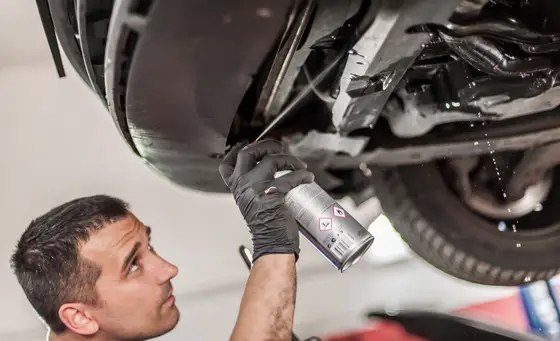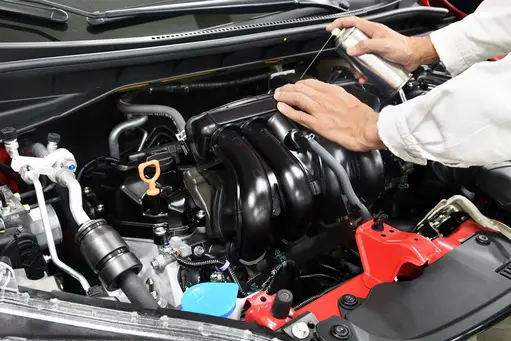An engine degreaser is a cleaning product with properties that enable it to remove grease, grime, oil, and other contaminants from the external engine surfaces and other mechanical parts. While it is critical to maintain the performance of the engine, it can be disastrous when used inappropriately. This is why you should have more than a passing knowledge of its application before you can use it on your own.
This article breaks down the best engine degreaser process to its basic components and provides guidance on how it should be applied and the expected benefits.
Composition of an Engine Degreaser
Your average degreaser has 3 basic categories of components or essential elements. There are organic and halogenated solvents to dissolve engine grease and debris that might accumulate in the engine bay and cause it to run hotter and inefficiently. There is water to dilute the strength of the corrosive chemicals, and emulsifiers to enable the water to mix with the oils, enhancing the cleaning action.
Types of Engine Degreasers
Engine degreasers come in different forms: spray, gel, or foam.
Spray degreasers are the easiest to use as you simply spray them on the surface of the engine. Gel and foam degreasers on the other hand are applied to the desired surfaces where they stick and work their magic. Their advantage is they don’t drip so they won’t transfer the product to unwanted surfaces.
How Engine Degreasers Work
Solvent-based degreasers are more preferred when it comes to engine cleaners. This is because they work rapidly and seem to cut through heavy grease buildup better than most water-based engine cleaner products. However, they have a strong solvent smell that may be irritating to those sensitive to strong-scented solvents.
Such individuals are advised to consider a water-based or natural product instead. Using a natural degreaser is less damaging to the painted surfaces and also helps you avoid health problems.
Point of Caution
Concentrated amounts of engine degreaser that come into contact with car paint may damage the finish. The situation worsens the longer you wait to remove the solution. Some degreasers contain residue that leaves stains and can make the paint fade or dissolve.
Other degreasers cause dulling and peeling. The effects mentioned above are because degreaser has Sodium Carbonate (commonly referred to as ash soda) which is highly abrasive, and its alkaline nature allows it to discolor exterior car paint.
This is what you should do in case the degreaser gets on other surfaces of the car:
Flush It Off
First, rinse it off with water as soon as possible. Degreaser can remove the protective layer of wax, exposing your car paint to the chemical. When you wash the degreaser away using water, you dilute the concentration of the degreaser, minimizing the damage.
Wipe the Residue and Inspect
You must then wipe your vehicle thoroughly and inspect for stains and scratches. In the case where there are minor scratches, you can go to the next step. If you don’t see any scratches or stains, you can go ahead with waxing and polishing.
Use a Mild Stain and Remover
Following the product instructions, you can apply a stain and scratch remover on the specific areas affected. A microfiber towel, soft cloth, or a provided applicator swab may be useful in this process.
Applying Wax and Polish
The main purpose of an engine degreaser is to dissolve grease and grime. Therefore, they are capable of stripping away the outer layer of your protective car wax. You can apply wax and polish to blend away any imperfections and help restore the paint of your vehicle to its original glory.
Preparation for Degreasing
- To be safe you must try and cover the areas around where you’re working to prevent any transfer or damage. Be especially cautious with any electrical components.
- It is very important to protect your eyes by wearing goggles.
- Before degreasing and cleaning your engine, it is important to carry out pre-degreasing cleaning. It is fundamental that you remove any debris that might be present in the engine bay as it may cause problems in the engine over time.
- Seek professional help if you realize any spills or splatter have sat for a long time and have caused damage to the deeper paint layers to warrant a repair.
- The weather is an important factor to consider when you degrease. Warm weather is preferred as the engine will dry quickly after cleaning.
- It is also important to ensure your engine is not hot when you degrease. You should let it cool for at least 15 minutes. This will reduce the chances of burning yourself. The hot engine will also make the degreaser evaporate faster without performing its function.
- Ensure to remove the negative terminal to the battery. It prevents the terminal from becoming wet and causing major damages.
- It is also good practice to remove any plastic pieces under the hood because they can be cleaned separately.
Benefits of Using an Engine Degreaser to Clean Your Engine
It Promotes Longevity
By using degreasers, we prevent wear and tear. Oil and grease build up on your car’s engine accelerate wear and tear which may become costly to you in the future.
Improvement of The Vehicle’s Aesthetic Value
Engine degreasers help give your car a cool shine under the hood. A quick 15-minute degreasing session ensures you improve the resale value of the motor vehicle. Every vehicle buyer prefers a clean vehicle both inside and outside.
Enhanced Performance
A proper engine degreaser ensures your engine shines and at the same time removes road grime hence improving your engine’s performance. The more dirt removed from the engine’s exterior, the fewer chances of debris making its way into the filter and clogging it.
Detecting Leakages
The engine degreaser helps in exposing fluid leaks you didn’t know existed especially if the vehicle is old. By removing the old gunk, you get the opportunity to find out where potential leaks are located. Uncovering these problems helps you make an informed decision on whether or not you need some parts replaced (such as a head gasket or a hose).
Other Considerations
Quantity
This is very important when purchasing a degreaser, there are many offers out there for purchasing engine degreasers in bulk at a bargain but you should only go as far as what is sufficient for your current needs. Check whether the solution needs to be diluted as this will increase the amount on hand. It isn’t advisable to store it for too long as with time it will eat through the container, leading to losses.
Alternate Applications
While engine degreasers are manufactured mainly for engines, they can also be used for other tough cleaning situations. You can apply them on your tools, equipment, and even bathrooms with stubborn stains. If you intend to use the degreaser as a multi-purpose cleaner, you must choose one that is sufficiently versatile and not too harsh that it will damage the surfaces instead.
Fragrance
Although the majority of users may be less concerned with their engines smelling nice, fragrance is still a consideration for a few when it comes to using a degreaser. Some highly concentrated degreasers might irritate your nostrils so if you are sensitive or particularly finicky, you might want to consider those with herbal or fresh fragrances. They are normally easy to work with, especially if you are working from a garage without open spaces.
How Often Should I Degrease My Car Engine?
There is no standard recommended time frame when you should preform your engine cleaning. It depends on variables like the frequency of your vehicle use and the terrain covered. That being said, you can schedule to be doing it as part of the vehicle maintenance routine every 6,000 to 10,000 miles or whenever you spot a growing accumulation of grease, dirt, or grime.


